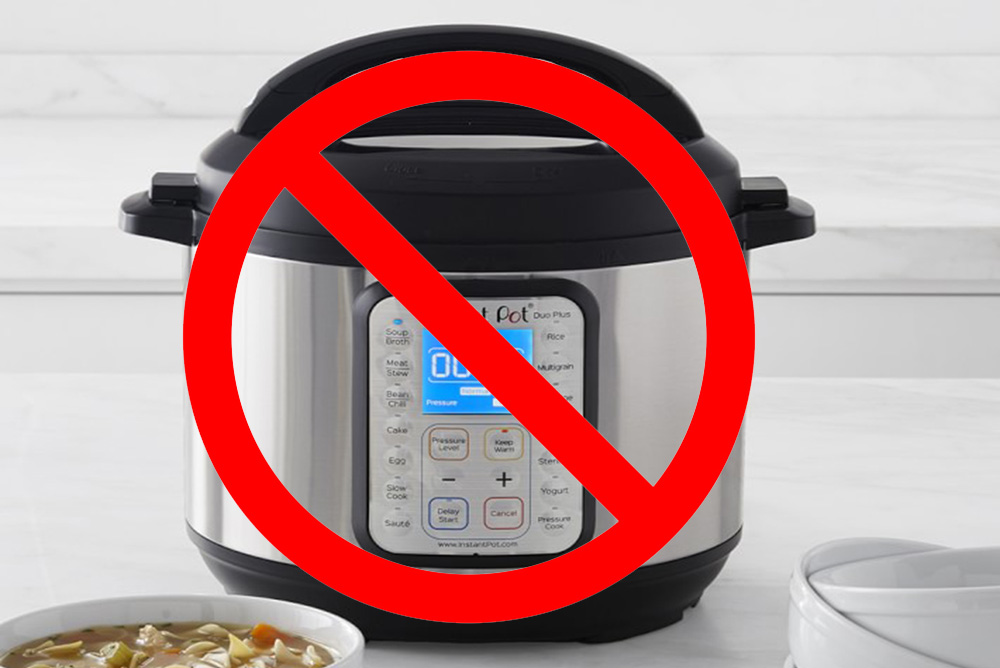 MY MOTHER-IN-LAW, Charlene, arrived for a holiday visit toting her new Instant Pot. On a whim she had purchased this season’s Wunder-appliance but wasn’t quite up to learning how to use it. Years earlier, we had experimented with pressure cookers together so bringing the pot to my house was a natural. I’ll admit I wasn’t too excited. I had a period of infatuation with my pressure cooker, but it now lives in my store room next to the crème brûlée torch and the parfait glasses. Charlene, on the other hand, never stopped using hers.
MY MOTHER-IN-LAW, Charlene, arrived for a holiday visit toting her new Instant Pot. On a whim she had purchased this season’s Wunder-appliance but wasn’t quite up to learning how to use it. Years earlier, we had experimented with pressure cookers together so bringing the pot to my house was a natural. I’ll admit I wasn’t too excited. I had a period of infatuation with my pressure cooker, but it now lives in my store room next to the crème brûlée torch and the parfait glasses. Charlene, on the other hand, never stopped using hers.
Gamely we set out to make one of the recipes from a cookbook devoted to Instant Pot cookery. The recipe turned out to be tortured—I could have gotten the same result with a jar of pre-made sauce less expensively and more quickly—but the end result was fork-tender baby back ribs. I liked the ribs, but the pot not so much. Once I got the hang of the control panel, it worked fine as an electric pressure cooker, delivering tender baby back ribs. And that’s really what it was, a very versatile electric pressure cooker. But just like my old pressure cooker, it had problems.
It would have been easier to sauté the aromatic vegetables in an nonstick saucepan. It would have been quicker and less messy to reduce the cooking liquids to a glaze in a nonstick saucepan. The time I saved using the pressure cooker wasn’t significant enough to turn the recipe into a quick weeknight dish.
If I wanted a pressure cooker, I’d definitely upgrade to an electric one. The electric version lets you safely walk away knowing the pressure will be constant and that the automatic timer will shut it off before anything bad can happen. Charlene plans to get rid of her old pressure cooker and use the Instant Pot instead. But I’m bypassing the whole contraption, I don’t need a pressure cooker that, like the Instant Pot, doubles as rice cooker and yogurt maker. In fact, I don’t need one at all.
I have a really good way to braise food, and it also entails only one pot: an old-fashioned, but super reliable, enameled cast-iron Dutch oven. When I have time, I make a big pot of stew, using the same one pot to brown the meat, sauté the vegetables and braise the meat. Prepping the stew takes about 45 minutes (just as it does for the Instant Pot). Once the meat is browned, and the vegetables, liquid and seasonings added, it all goes into the Dutch oven and into a 315-degree oven to cook away, and I am free. True, the braising time is long, even quick-to-braise chicken thighs take 45 minutes and beef stews take up to 2½ hours, but that’s all time I can spend doing something else as the food cooks away by itself in the oven. That includes getting my rice cooker going so the rice and the stew will be ready at the same time. The same concept would work with the baby back ribs.
I also have my own old-fashioned trick for an easy, fast braised dinner. The day the stew is cooked, I take some of that slow-braised stew and freeze it. Some night in the future, I will transfer the frozen stew to that same cast-iron pot (or maybe one a little smaller), add ½ cup or so of water, put the cover on and transfer it to a 350-degree oven. Depending on how big a block of stew I have, it can take 30 to 60 minutes to defrost fully. Just enough time to change, get the rice or the pasta or the potatoes going, settle in and be ready to eat. That’s my idea of true home-cooked convenience.
—Stephanie Witt Sedgwick
LittleBird “Stephanie Cooks” delivers dinner wisdom every Monday on MyLittleBird.com.
